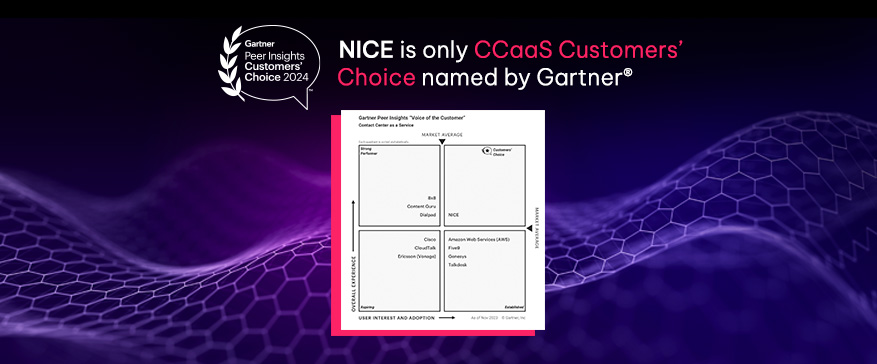AI, Automation, and Analytics: Prescription for Healthcare Success
- Definition of Customer Service Automation
- Key Components of Customer Service Automation Tools
- Why Automate Customer Service
- Examples of Customer Service Automation
- Use Cases for Customer Service Workflows in Automation Tools
- How to Automate Customer Service
- Top Customer Service Automation Software
- Challenges and Solutions for Customer Service Agents in Customer Service Automation
- Future Trends in Customer Service Automation
- Conclusion
- FAQs
- Gartner predicts that by 2026, 85% of customer interactions will be handled without human agents, up from 50% in 2023.
- McKinsey reports that automation can reduce customer service costs by 20-40%, providing a significant return on investment (ROI).
- Salesforce research indicates that 77% of service teams now use automation tools to manage repetitive tasks, allowing human agents to focus on more complex issues.
Definition of Customer Service Automation
Customer service automation refers to the use of advanced technology to streamline and automate various customer support processes. This enables businesses to provide faster, more efficient, and personalized service to their customers. By automating routine tasks such as answering common questions, routing support tickets, and analyzing customer data, businesses can free up their human customer service agents to focus on more complex and high-value tasks. This not only improves operational efficiency but also enhances the overall customer experience.Key Components of Customer Service Automation Tools
- AI-Powered Chatbots AI-powered chatbots are a crucial component of automated customer service software, often serving as the first touchpoint in customer interactions. They use advanced AI technologies like Natural Language Processing (NLP) to understand and respond to customer queries in a human-like manner.
- Natural Language Processing (NLP): Chatbots use NLP to interpret the meaning and intent behind customer inputs, enabling them to respond appropriately. Modern chatbots can resolve up to 80% of routine inquiries, such as password resets, order tracking, and FAQs, without requiring escalation to a human agent.
- 24/7 Availability: Chatbots operate around the clock, providing uninterrupted service. This reduces wait times and boosts customer satisfaction, especially in global businesses with customers in different time zones.
- Multilingual Support: AI-powered chatbots can handle queries in multiple languages, making them invaluable for businesses with international customers. For example, multilingual chatbots can reduce language barriers and ensure consistent support, which enhances the global customer experience.
- Self-Service Portals Self-service portals empower customers to resolve their own issues without contacting a support agent. They are particularly effective for businesses dealing with high volumes of inquiries.
- Knowledge Bases: These repositories provide articles, FAQs, and video tutorials that customers can access to solve common problems. Businesses with knowledge bases report a 30% reduction in support tickets.
- Community Forums: These forums enable peer-to-peer interactions, where customers can share solutions and advice. This not only reduces the workload on support teams but also builds a sense of community among users.
- Dynamic FAQs: AI-enhanced FAQs automatically update based on customer behavior, search trends, and common inquiries. This ensures that customers always have access to relevant and up-to-date information.
- Automated Ticketing Systems Automated ticketing systems streamline issue management, ensuring that every customer inquiry is addressed promptly and appropriately.
- Intelligent Routing: Tickets are automatically categorized and assigned to the best-suited agents based on skills, availability, and urgency. This reduces ticket resolution time by 25-35%.
- Workflow Automation: Repetitive tasks such as ticket creation, follow-ups, and escalations are automated, ensuring that no issue is overlooked.
- Analytics: These systems provide detailed insights into ticket trends, agent performance, and resolution rates, helping businesses identify bottlenecks and areas for improvement.
- Interactive Voice Response (IVR) Systems IVR systems enable customers to navigate support options through voice or keypad inputs, directing them to the appropriate department or agent.
- Personalized Call Routing: IVR systems use customer data to personalize interactions, routing calls to agents who are best equipped to handle specific issues. This improves first-call resolution (FCR) rates by reducing misdirected calls.
- AI Integration: Modern IVR systems leverage AI to understand natural speech, making interactions more efficient and user-friendly. This can reduce call handling times by 20-30%.
- Cost Savings: Businesses using AI-driven IVR systems report a 40% reduction in call handling costs compared to traditional systems.
- Proactive Support Tools Proactive support tools anticipate customer needs and address issues before they escalate.
- Automated Notifications: These include reminders for payments, updates on orders, or alerts about service outages. Proactive notifications reduce inbound inquiries and demonstrate a commitment to customer care.
- Predictive Support: AI analyzes historical data to identify patterns and predict potential issues, allowing businesses to address problems before they occur. Predictive support can reduce inbound queries by 20-30%.
- Customer Feedback Automation Collecting and analyzing customer feedback is crucial for continuous improvement. Automation tools streamline this process, ensuring timely and actionable insights.
- Post-Interaction Surveys: Surveys are automatically sent after customer interactions to gauge satisfaction. Businesses using automated feedback tools report a 15% increase in survey response rates.
- Sentiment Analysis: AI tools analyze survey responses and other customer communications to identify trends and detect dissatisfaction. This enables businesses to address concerns proactively.
Benefits of Customer Service Automation Tools for Customer Satisfaction
- Faster Response Times: Automation tools resolve inquiries in seconds rather than hours or days. For example, chatbots and IVR systems can handle routine questions instantly, reducing response times by up to 70%.
- Cost Savings: By automating repetitive tasks, businesses can significantly reduce operational costs. According to a Forrester study, automation tools lower customer service costs by an average of 30%, making them a cost-effective solution.
- Scalability: Automation tools are designed to handle high volumes of inquiries, making them ideal for businesses experiencing rapid growth or seasonal demand surges. Unlike human agents, automated systems can scale without additional staffing costs.
- Enhanced Customer Experience: Meeting customer expectations is crucial, and automation tools help businesses deliver more efficient and personalized support, thereby enhancing customer satisfaction and loyalty. Personalized and proactive support ensures that customers feel valued. Automation tools also reduce frustration by minimizing wait times and providing accurate, consistent answers.
- Improved Employee Productivity: By handling routine tasks, automation tools free up human agents to focus on complex and high-value interactions. This increases agent productivity by 25-40%, enabling better use of resources.
Why Automate Customer Service
Automating customer service can bring numerous benefits to businesses, including:- Improved Efficiency: Automation reduces the time and effort required to handle customer inquiries, allowing support teams to focus on more complex issues.
- Enhanced Customer Satisfaction: By providing faster and more personalized service, businesses can improve customer satisfaction and loyalty.
- Increased Productivity: Automation helps support teams handle a higher volume of customer inquiries without increasing the workload of human agents.
- Cost Savings: Automating routine tasks helps reduce labor costs and improves resource allocation, making it a cost-effective solution.
Examples of Customer Service Automation
Some common examples of customer service automation include:- Chatbots: AI-powered chatbots can answer common customer questions, provide basic support, and route complex issues to human agents.
- Automated Email Responses: Businesses can use automated email responses to provide quick answers to common customer inquiries, such as order status updates or product information.
- Self-Service Portals: These portals provide customers with access to knowledge bases, FAQs, and other resources to help them resolve issues on their own.
- Automated Ticket Routing: This system routes customer support tickets to the most appropriate support agent or team based on the issue type, customer location, or other factors.
Use Cases for Customer Service Workflows in Automation Tools
- E-commerce: In e-commerce, automation tools assist with various customer service tasks such as order tracking, returns, and FAQs. For instance, chatbots can guide customers through the purchase process, increasing conversion rates by 20%.
- Telecommunications: IVR systems troubleshoot technical issues and schedule service appointments, reducing the workload on human agents by 50%.
- Banking and Financial Services: Chatbots handle routine banking inquiries, such as balance checks and transaction histories, addressing up to 70% of customer queries without human intervention.
- Healthcare: Self-service portals enable patients to book appointments, access medical records, and receive telehealth support. These tools reduce administrative workloads by 35%, allowing healthcare providers to focus on patient care.
- Travel and Hospitality: Automation tools manage bookings, send itinerary updates, and notify customers of delays. Predictive support features anticipate disruptions and provide alternative solutions, enhancing the travel experience.
How to Automate Customer Service
To automate customer service, businesses can follow these steps:- Identify Areas for Automation: Analyze customer support processes to identify areas where automation can bring the most value.
- Choose the Right Tools: Select customer service automation software that meets the business’s needs and integrates with existing systems.
- Configure and Customize: Configure and customize the automation software to meet the business’s specific needs and workflows.
- Train and Support: Train support teams on how to use the automation software and provide ongoing support to ensure successful adoption.
- Monitor and Optimize: Continuously monitor the performance of the automation software and make adjustments as needed to optimize results.
Top Customer Service Automation Software
Some top customer service automation software options include:- Salesforce Service Cloud: A comprehensive customer service platform that includes automation, workflow, and analytics tools.
- Zendesk: A customer service software that includes automation, ticketing, and analytics tools.
- Freshdesk: A cloud-based customer service software that includes automation, ticketing, and analytics tools.
- HubSpot: A customer service software that includes automation, ticketing, and analytics tools, as well as CRM and marketing functionality.
- Intercom: A customer service software that includes automation, ticketing, and analytics tools, as well as messaging and chat functionality.
Challenges and Solutions for Customer Service Agents in Customer Service Automation
- Impersonal Interactions: One challenge of automated systems is maintaining a personal touch in customer interaction. Solution: Use AI to personalize interactions by referencing customer history, preferences, and context.
- Integration with Legacy Systems: Outdated systems may struggle to integrate with modern tools. Solution: Choose automation platforms with robust APIs and compatibility with existing systems.
- Customer Resistance to Automation: Some customers prefer human agents for support. Solution: Offer clear escalation paths to human agents and ensure automated tools provide seamless, intuitive experiences.
- Initial Setup Costs: Implementing automation tools can be expensive initially. Solution: Focus on solutions with proven ROI and scalable pricing models to justify upfront investments.
Future Trends in Customer Service Automation
- Hyper-Personalization: AI will analyze real-time data to offer tailored recommendations, improving customer satisfaction and loyalty.
- Voice-Activated Support: Increased use of voice assistants like Alexa and Google Assistant will expand the scope of automated customer interactions.
- Conversational AI: Advanced chatbots will simulate human-like conversations, further improving the quality of automated support.
- Omnichannel Automation: Unified platforms will integrate automated customer service tools across all communication channels, ensuring consistent experiences.
- Predictive Analytics: AI will predict customer needs and enable businesses to provide proactive solutions, reducing inbound inquiries and enhancing satisfaction.










